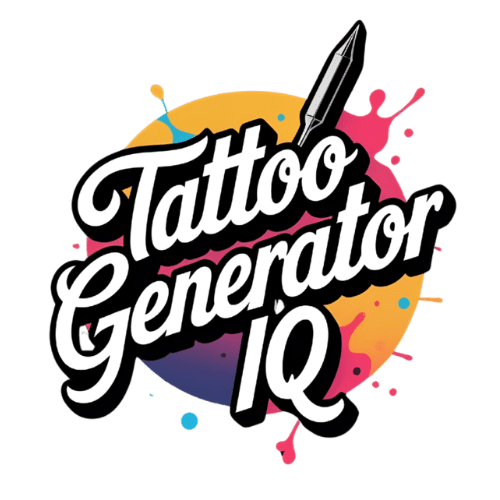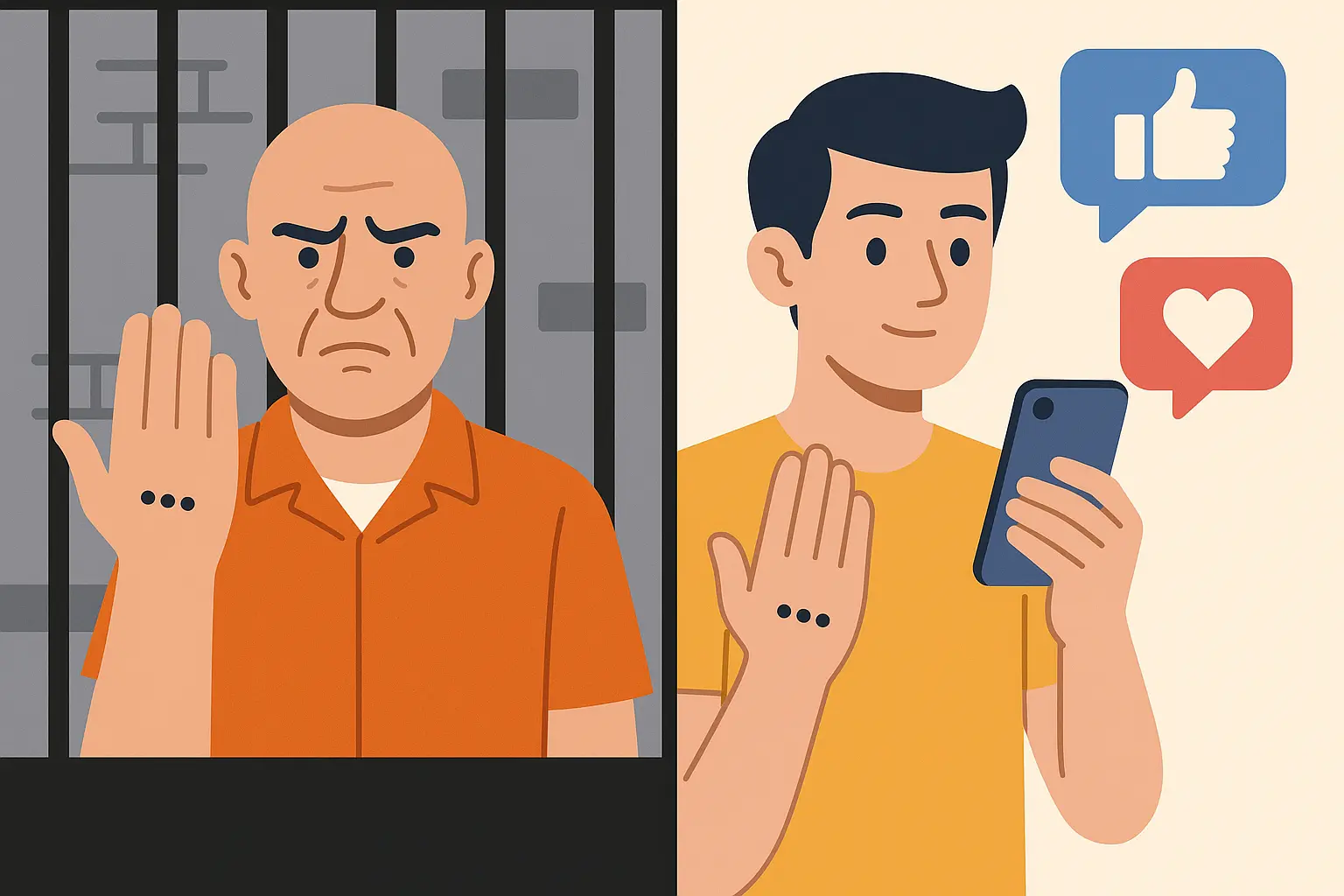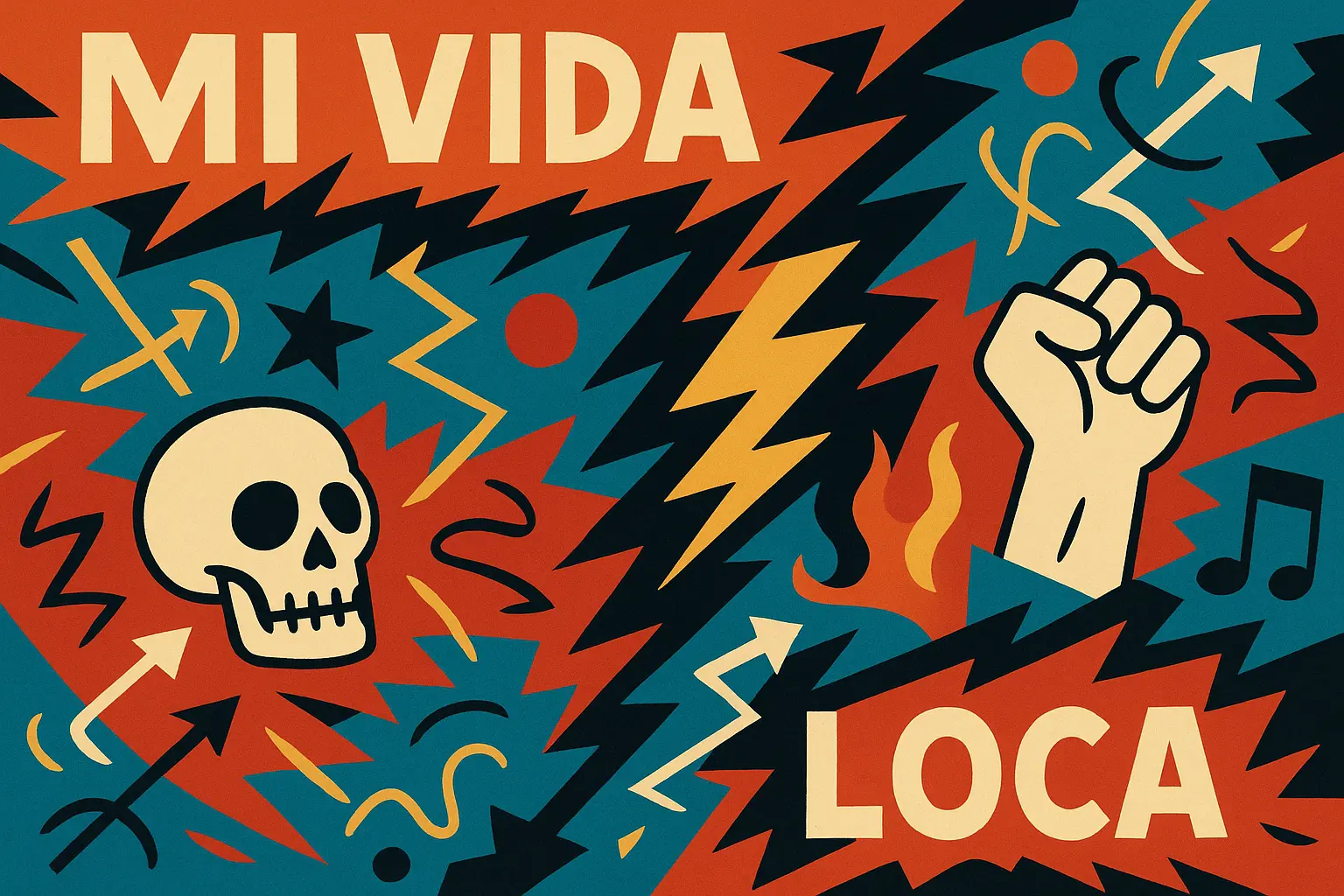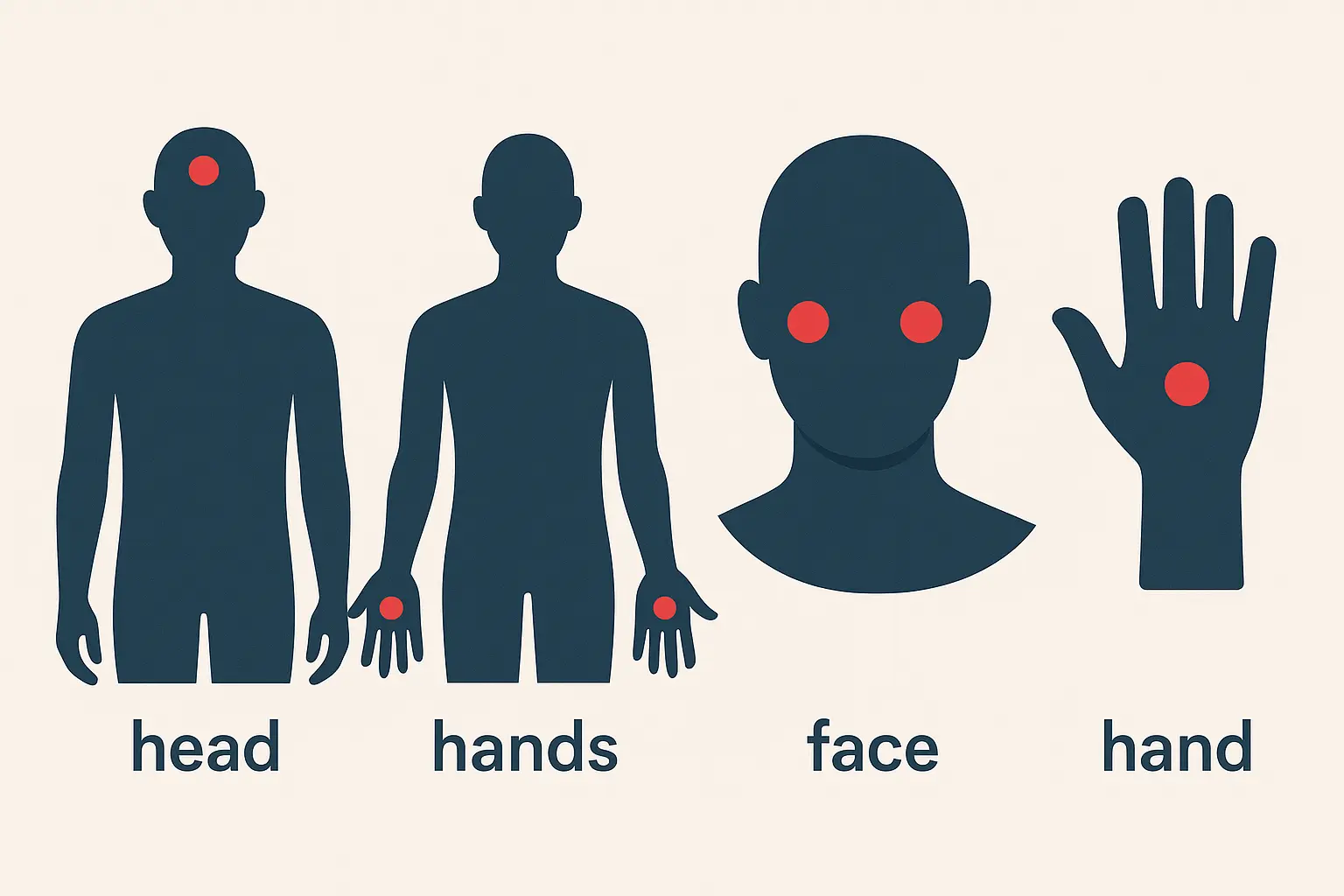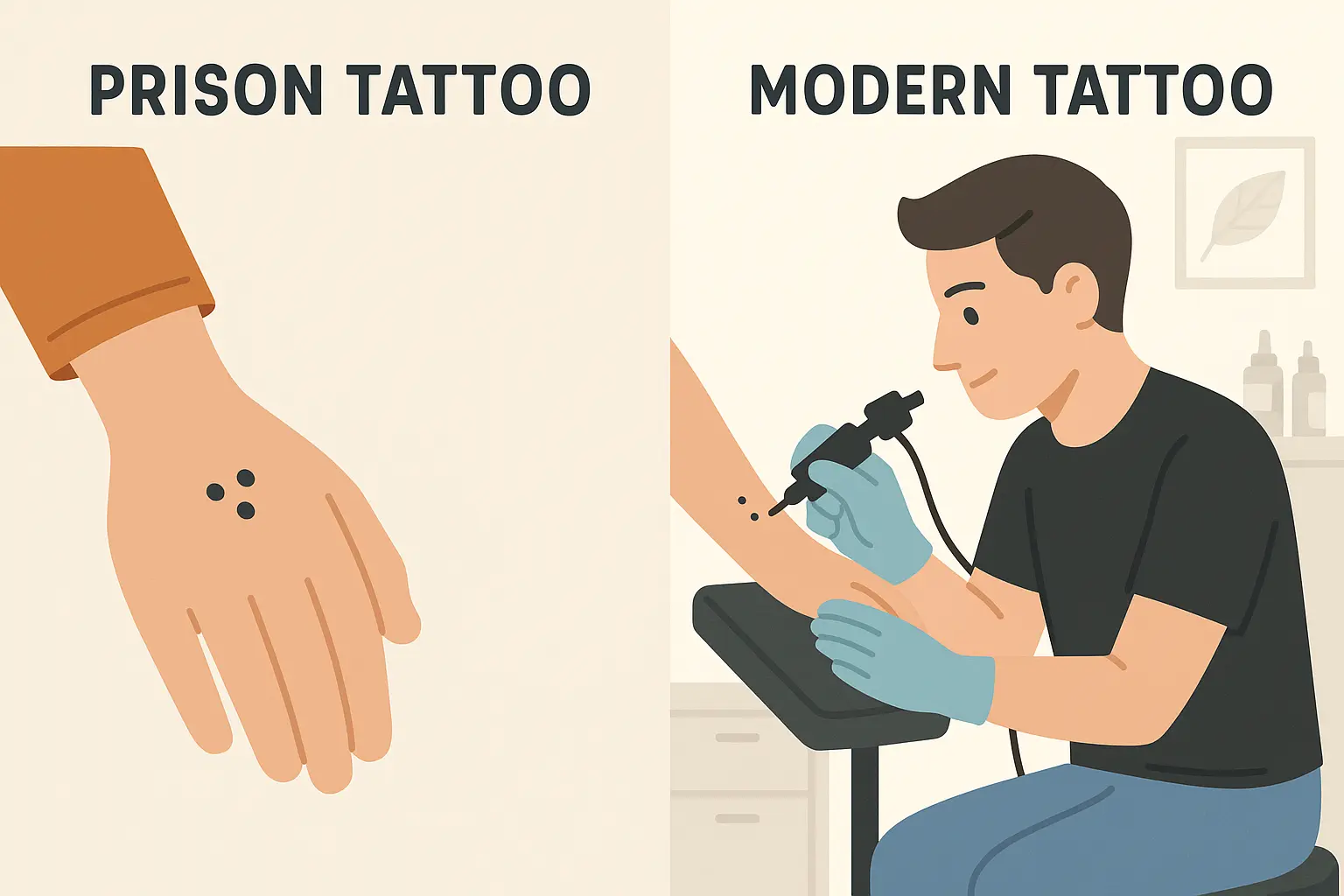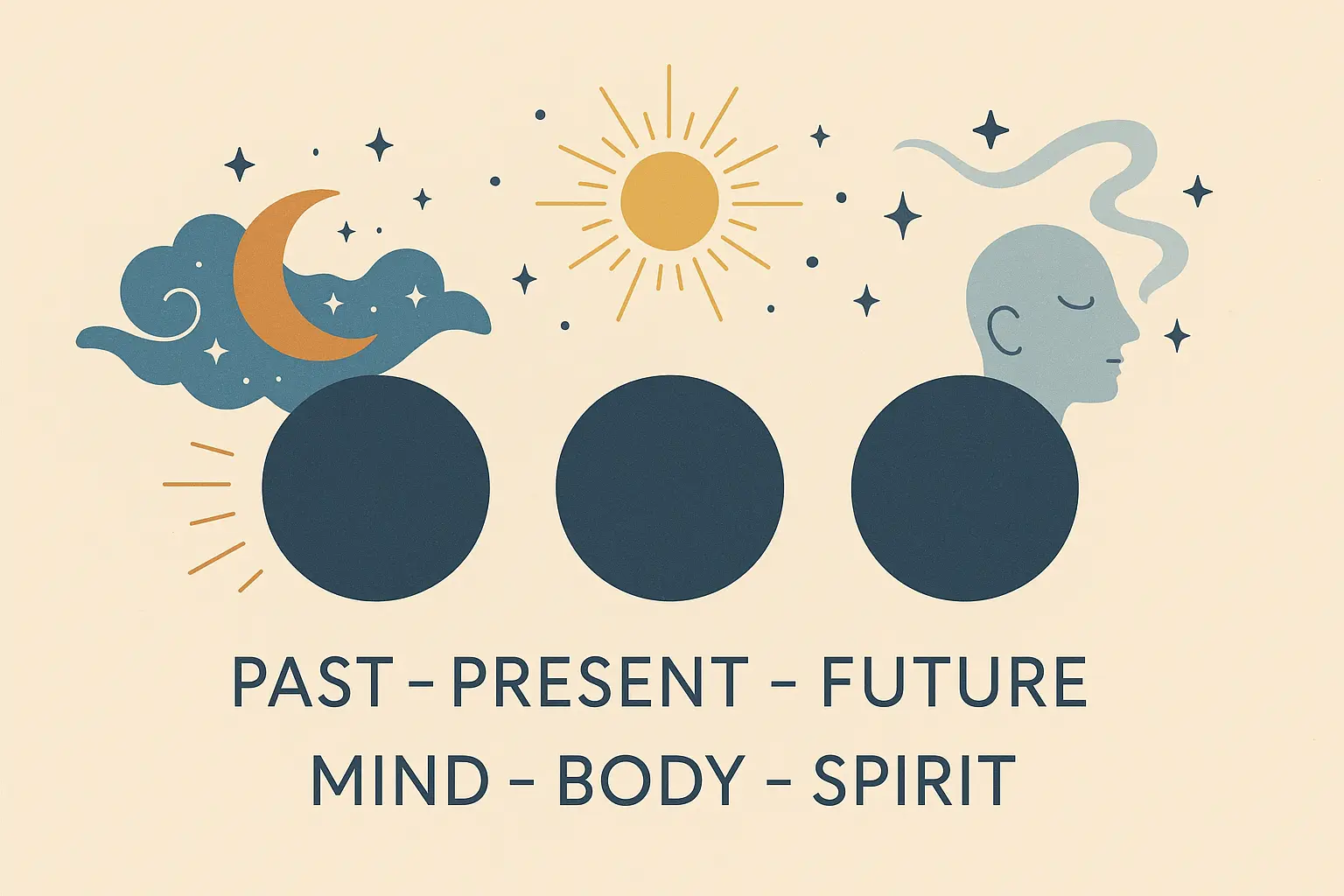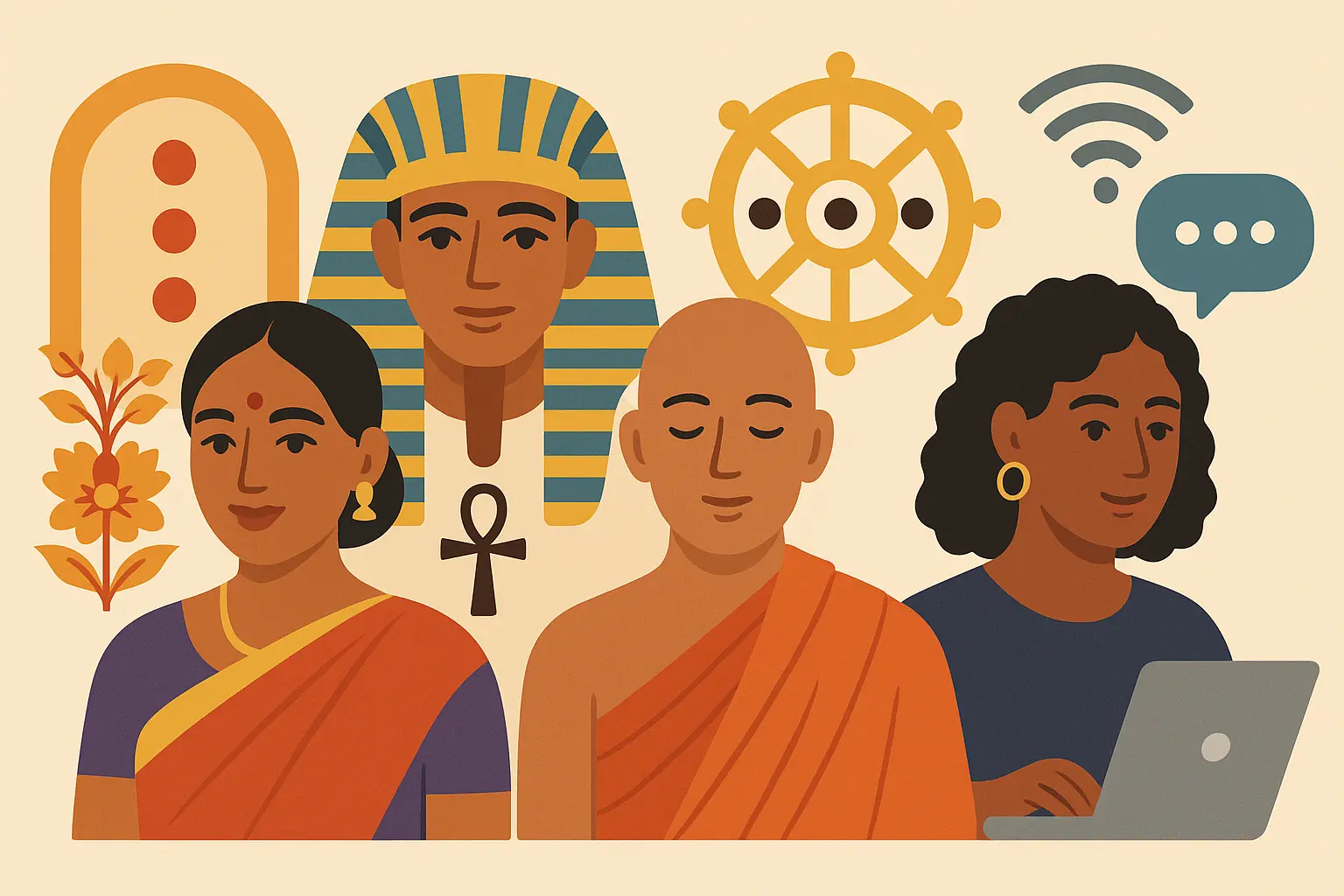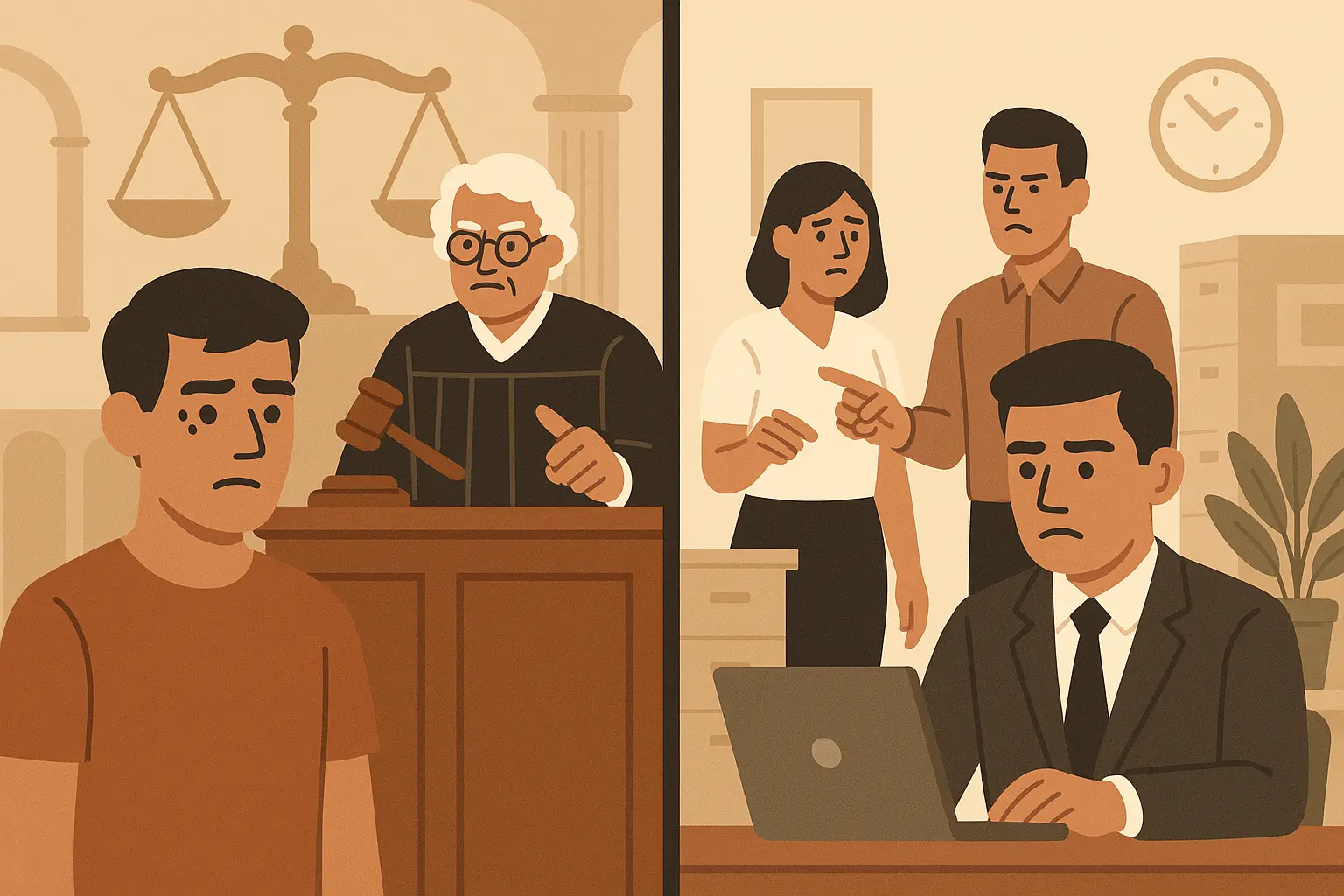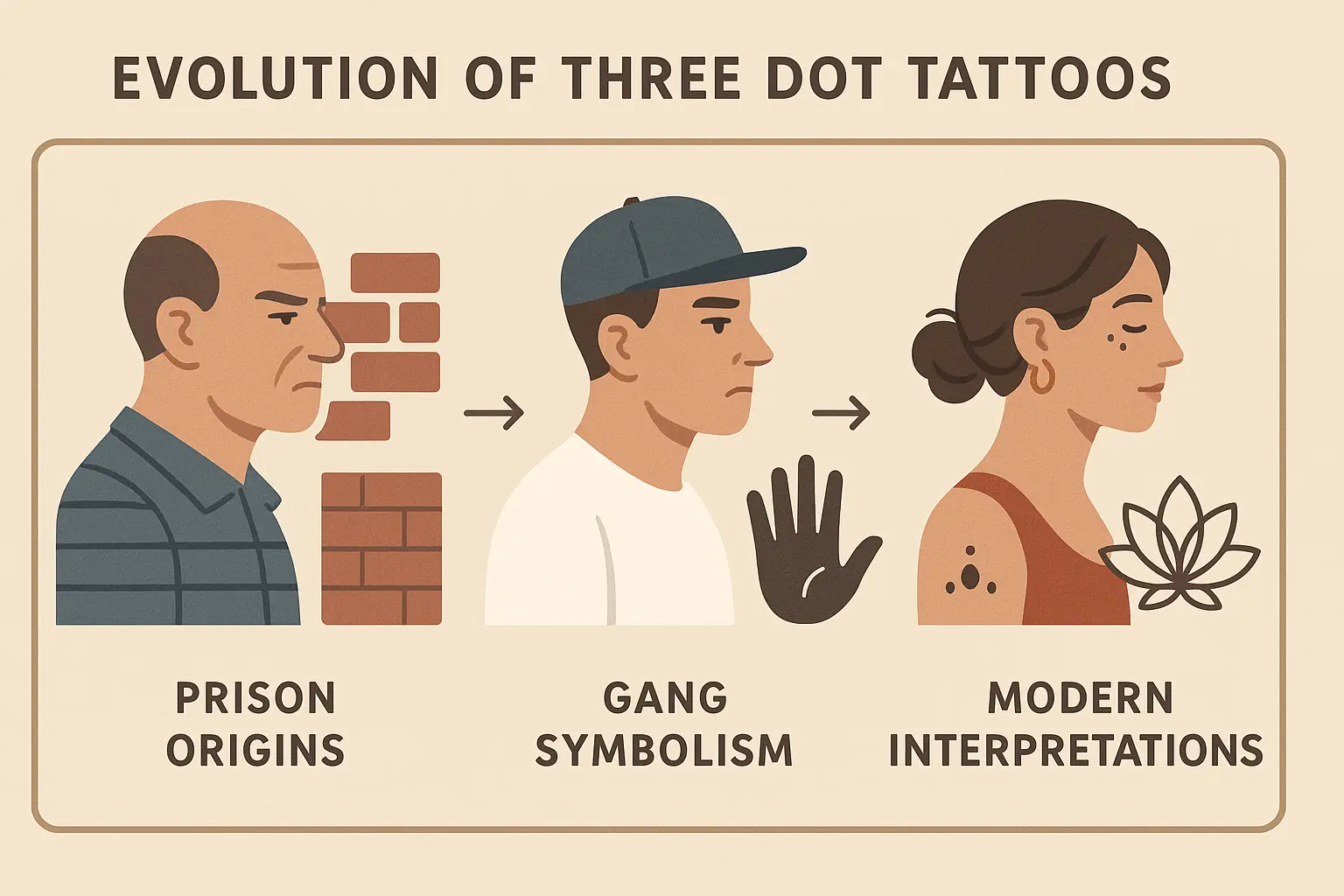Three Dot Tattoo Meaning: What Your Simple Ink Really Says About You
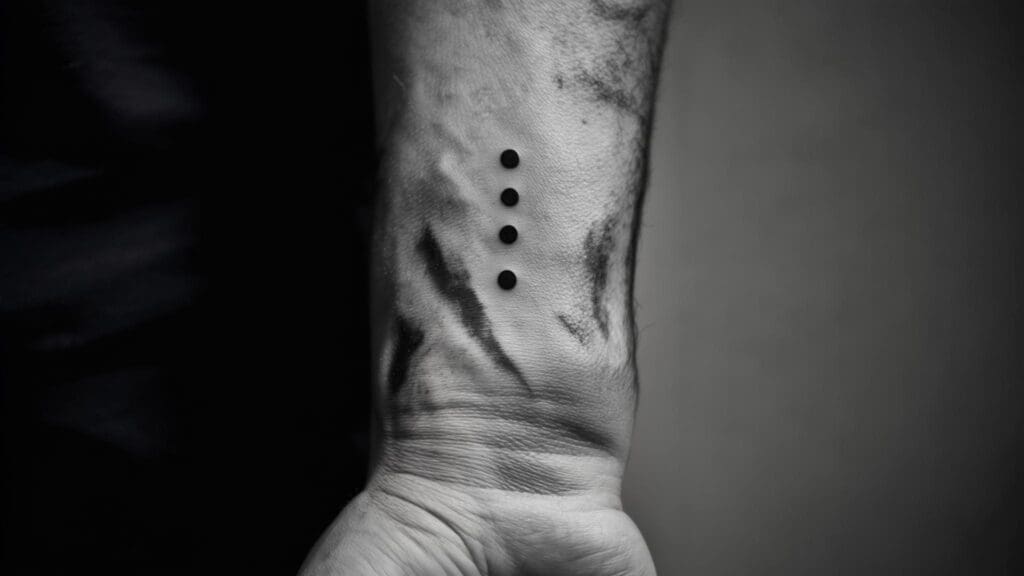
You’ve probably seen them everywhere – three tiny dots that look innocent enough but pack a serious punch. Maybe your barista has them behind her ear, or you spotted them on someone’s hand at the grocery store. Those aren’t just random dots, and the story behind them is way more complicated than you’d think.
What started as necessity-driven symbols within prison walls has evolved into this crazy mix of meanings across different communities, showing how tattoo culture has completely blown up in mainstream society. According to cultural research, “the three dots symbol has existed for centuries and appears in religion, mysticism, and underground cultures” (InkPPL), proving this simple design has deep roots that go way back across multiple cultures and belief systems.
Table of Contents
-
From Prison Yards to Instagram: The Cultural Journey
-
The Original Code: Prison Origins and Gang Connections
-
When “Mi Vida Loca” Became Mainstream
-
Why Location Makes All the Difference
-
How Movies Changed Everything
-
The Great Transformation: Going Mainstream
-
Finding Deeper Purpose: Spiritual Meanings
-
The Minimalist Revolution
-
Geography Matters: Regional Differences
-
Cultural Adaptations Across Communities
-
What Tattoo Artists Really Think
-
The Ethics of Inking Three Dots
-
Safety First: Legal and Professional Risks
-
Digital Age Evolution
TL;DR
-
Three dot tattoos started in prison culture as coded communication for gang stuff and criminal history
-
The “mi vida loca” (my crazy life) meaning became the most recognized through movies and media
-
Where you put them matters big time – near the eye traditionally meant active gang involvement
-
Modern mainstream adoption focuses more on spiritual meanings like past-present-future or mind-body-spirit
-
Different regions have dramatically different interpretations of the same symbol
-
Professional tattoo artists now use risk assessment when clients want three dots
-
Law enforcement keeps databases of gang-related tattoos, including three dot variations
-
Social media has made three dots trendy while sometimes watering down their cultural significance
-
Employment discrimination and social stigma are still real consequences for visible three dot tattoos
From Prison Yards to Instagram: The Cultural Journey
Look, I’ve been watching this whole thing unfold for years, and it’s honestly wild how three dots went from something you’d see scratched into a prison wall to trending on TikTok. We’re talking about a complete 180 here.
Understanding how digital culture has revolutionized tattoo meanings helps explain why three dot interpretations have shifted so dramatically in recent years.
Back in the day, these weren’t just some cute dots people picked because they looked cool. They were like a secret language – inmates needed ways to talk without actually talking, you know? When you can’t openly discuss your business or who you’re connected to, you find other ways to communicate. And three simple dots? Perfect. Guards might not even notice them, but the right people knew exactly what they meant.
The crazy part is how long it took for this underground symbol to bubble up into regular society. We’re talking decades of cultural shifts, movies making gang life look glamorous, and tattoos slowly becoming acceptable in “normal” jobs. What used to mark you as part of a very specific world now shows up on suburban moms who just think it represents their three kids.
The Original Code: Prison Origins and Gang Connections
Prison is a whole different world with its own rules, and if you don’t know how to navigate it, you’re in trouble. Three dots became part of that survival toolkit because they were genius in their simplicity. You could tap them out with basically anything – a paperclip, soot mixed with soap, whatever you could get your hands on.
Here’s what’s crazy – the same three dots could mean completely different things depending on where you were locked up. California prisons had their own system, Texas had theirs, and don’t even get me started on federal facilities. It was like regional dialects, but with ink under your skin.
Recent developments in El Salvador’s CECOT prison have shown how tattoo symbolism still plays a huge role in gang culture. “The three dots, a common prison tattoo easily marked with amateur equipment, is said to be shorthand for ‘Mi Vida Loca’, or ‘My Crazy Life'” (Daily Mail), according to prison director Belarmino Garcia’s explanation of how staff learn to read tattoos for understanding inmates’ backgrounds and connections.
And man, the equipment they used was rough. We’re not talking about sterile needles and professional ink here. Guys were using whatever they could find, which is part of why prison tattoos have that distinctive look. It wasn’t about pretty – it was about getting the message across.
Prison Three Dot Variations by Region
|
Region |
Primary Meaning |
Typical Placement |
Associated Groups |
|---|---|---|---|
|
California |
Gang affiliation/completed time |
Hand, near eye |
Hispanic gangs, prison networks |
|
East Coast |
Criminal specialization |
Fingers, wrist |
Various prison factions |
|
Texas |
Sentence length indicator |
Hand web, forearm |
Regional gang structures |
|
Federal System |
Cross-facility communication |
Varies by facility |
Multi-state networks |
When “Mi Vida Loca” Became Mainstream
“Mi vida loca” – my crazy life. Those three words hit different because they weren’t just describing gang life. They were describing how a lot of people felt, period. Living paycheck to paycheck, making questionable decisions, feeling like everything was chaos? Yeah, that resonated way beyond the streets.
The Hispanic community really ran with this interpretation, and honestly, it made sense. When your life feels unpredictable and dangerous, why pretend it’s all sunshine and rainbows? Three dots became a way to own that reality instead of hiding from it.
According to research on gang membership, “Prisoners wearing three dots arranged in a triangle are usually associated with a gang” (MyTattoo), showing how this simple symbol became a universal identifier across different criminal organizations and prison systems.
But here’s where it gets interesting – even people who’d never been near gang culture started connecting with that feeling. College students stressed about exams, single parents juggling three jobs, anyone dealing with life’s curveballs could relate to feeling like their world was spinning out of control.
Take Maria, a former gang member who got three dots on her hand at 16 to represent “mi vida loca.” Twenty years later, as a successful social worker, she explains to clients that her tattoo reminds her of how far she’s traveled from that chaotic lifestyle, transforming its meaning from celebration of chaos to acknowledgment of personal growth and resilience.
Why Location Makes All the Difference
Okay, this is crucial – where you put those dots matters more than you might think. Near your eye? That’s serious business. That placement was basically announcing to the world that you were active, dangerous, and not planning to change anytime soon. It’s like wearing a neon sign that says “I’ve crossed lines you probably don’t want to cross.”
When thinking about placement options, many people now explore simple tattoo alternatives that carry personal meaning without the cultural baggage of traditional three dot positioning.
Hand placement was different – still significant, but more about status or completed time. You could hide hand tattoos if you needed to look respectable for court or whatever. But face tattoos? Those were permanent announcements.
The thing is, a lot of people getting three dots today have no clue about these placement rules. They just think the dots look cool behind their ear or on their wrist. But in certain neighborhoods or around certain people, that innocent aesthetic choice might send a message they never intended.
Three Dot Placement Assessment Checklist:
-
Consider visibility in professional settings
-
Research regional meaning variations
-
Evaluate potential law enforcement interpretation
-
Assess personal safety implications
-
Understand cultural context in your area
-
Consult with experienced tattoo artists
-
Consider alternative placements for similar symbolism
How Movies Changed Everything
Hollywood figured out that three dots were perfect shorthand for “this person is dangerous.” Need to establish that your character has a criminal background? Slap some three dots on them and boom – instant street cred without having to explain their whole backstory.
“Mi Vida Loca” probably did more for three dot awareness than anything else. Suddenly, people who’d never stepped foot in a prison knew what those dots meant. Every crime show after that seemed to feature characters sporting three dots somewhere visible.
But here’s the problem with Hollywood – they love the drama but miss the nuance. Movies showed the dots but didn’t explain the regional differences, the placement significance, or the real-world consequences. People learned that three dots meant something important, but they got the CliffsNotes version of a much more complex story.
The Great Transformation: Going Mainstream
Then something weird started happening. Tattoo shops began seeing customers who clearly had never been anywhere near a prison asking for three dots. College kids, office workers, suburban teenagers – people who just liked the minimalist look and wanted to attach their own meaning to it.
This created some awkward situations, let me tell you. Tattoo artists found themselves in the position of having to explain why those innocent-looking dots might not be so innocent after all. Some clients didn’t care – they wanted to create their own meaning. Others freaked out and changed their minds.
Social media really accelerated this whole transformation. Instagram made everything about the aesthetic, stripping away context and history. Suddenly, three dots were just another trendy minimalist design to go with your carefully curated feed.
The rise of fine line tattoo techniques has allowed artists to create more sophisticated three dot variations that appeal to mainstream clients seeking elegant minimalist designs.
This shift created challenges for both tattoo artists and clients. Artists had to navigate between respecting the symbol’s origins and accommodating clients who wanted purely aesthetic or personal interpretations. Clients had to decide whether they cared about authentic meaning or preferred to create their own symbolic associations.
Finding Deeper Purpose: Spiritual Meanings
Here’s where things get really interesting – spiritual seekers discovered that three dots could represent all kinds of meaningful concepts. Past, present, future. Mind, body, spirit. Beginning, middle, end. The number three shows up everywhere in religion and philosophy, so these simple dots became like a blank canvas for deeper meaning.
Research on minimalist tattoo symbolism reveals that “three is considered to be the numeral that represents the ‘whole’ of the universe, correlating to time, the human body and the world as we know it” (Tattoodo), showing the universal appeal of three-based symbolism across cultures and belief systems.
I’ve talked to people who got three dots to represent their kids, their core values, their biggest life lessons – basically anything that came in threes and mattered to them. It’s actually pretty beautiful how something that started as prison code evolved into this tool for personal reflection.
The spiritual interpretation let people embrace three dot symbolism while completely sidestepping the criminal associations. Same visual, totally different energy. That flexibility is probably why the symbol has survived and thrived across so many different contexts.
Sarah, a yoga instructor, chose three dots on her wrist to represent mind, body, and spirit after completing her 500-hour teacher training. She explains to curious students that each dot reminds her to maintain balance across all aspects of her being, using the ancient symbol to anchor her modern wellness practice and daily meditation routine.
Religious Symbolism
Christianity found natural connections between three dots and Trinity symbolism. Father, Son, and Holy Spirit could be represented through simple geometric arrangements that carried profound theological meaning for believers. The visual simplicity appealed to Christians who wanted faith-based tattoos without obvious religious imagery.
Buddhist interpretations focused on the Three Jewels – Buddha (the teacher), Dharma (the teaching), and Sangha (the community). These concepts provided rich symbolic content that transformed simple dots into meditation focal points.
Hindu traditions offered their own three-dot interpretations, often connecting to concepts like creation, preservation, and destruction, or the three gunas (qualities of nature). The flexibility of the symbol allowed for multiple layers of meaning within single belief systems.
The Minimalist Revolution
The minimalist tattoo trend was perfect for three dots. Clean, simple, meaningful without being obvious – everything the minimalist crowd was looking for. Professional artists started creating these perfectly spaced, precisely sized dots that looked nothing like the rough prison versions.
Clean execution became crucial in minimalist three dot tattoos. Professional artists developed techniques for creating perfectly spaced, uniformly sized dots that looked intentional rather than improvised. The contrast with crude prison versions was stark and deliberate.
Modern practitioners often explore tiny tattoo concepts that incorporate three dot elements while maintaining sophisticated aesthetic appeal.
Behind the ear, on the wrist, along the collarbone – these became the new hotspots for three dots, chosen more for aesthetic appeal than coded communication. The contrast with the original crude prison versions was stark and completely intentional.
Social media ate this up. Three dots fit perfectly into those carefully curated lifestyle posts, looking sophisticated and mysterious without being too obvious or aggressive.
Geography Matters: Regional Differences
Here’s something most people don’t realize – three dots can mean completely different things depending on where you are in the country. West Coast gang culture developed its own language around these symbols that doesn’t necessarily translate to East Coast interpretations.
California’s proximity to Mexico influenced how Hispanic gangs used three dots, creating meanings that might not make sense in New York or Florida. Prison systems in different states developed their own symbolic dialects, and inmates transferred between facilities sometimes had to learn new languages or risk serious misunderstandings.
This geographic factor is huge for people considering three dots today. What’s relatively harmless in one city might be seriously problematic in another. Local context matters more than most people realize.
According to gang research documentation, “in American culture, the tattoo is most commonly associated with prison life, Chicano gang culture, and spirituality, while in Russia, Germany, France, and Spain, the three dots have different connotations” (InkPPL), showing how geographic boundaries create entirely different symbolic systems.
Cultural Adaptations Across Communities
Different communities found ways to make three dots work within their own cultural frameworks. Native American tribes sometimes connected the dots to traditional concepts about the three worlds or life stages, blending contemporary tattoo culture with ancient wisdom.
Different tribes assigned unique meanings to three dot configurations, incorporating traditional storytelling elements or seasonal cycles that predated contemporary tattoo culture by centuries. These interpretations honored both cultural heritage and modern identity expression.
Latino communities developed sophisticated systems around three dots that went way beyond “mi vida loca,” incorporating elements from Mexican traditions, Catholic symbolism, and urban culture into complex meaning structures.
Asian American communities adapted the symbolism to reflect Buddhist or Taoist concepts, creating hybrid meanings that honored ancestral wisdom while expressing contemporary American identity.
Cultural Interpretations of Three Dots
|
Cultural Group |
Primary Interpretation |
Traditional Connection |
Modern Application |
|---|---|---|---|
|
Hispanic/Latino |
Mi vida loca, Holy Trinity |
Catholic symbolism |
Gang culture, spiritual expression |
|
Native American |
Three worlds, life stages |
Traditional cosmology |
Cultural identity, spiritual practice |
|
Buddhist/Hindu |
Three jewels, three gunas |
Ancient philosophy |
Meditation focus, spiritual reminder |
|
European |
Prison brotherhood, resistance |
Underground culture |
Minimalist aesthetic, rebellion |
What Tattoo Artists Really Think
Professional tattooists have gotten pretty good at handling three dot requests because, honestly, we’ve seen it all. The conversation usually starts with us asking why someone wants three dots specifically, and experienced artists can tell pretty quickly whether the client knows what they’re getting into.
We’ve developed informal risk assessment protocols – considering the client’s background, where they want the tattoo, what their local community is like, and how likely they are to be misunderstood. It’s not about judging people; it’s about making sure they make informed decisions.
A lot of artists have gotten creative with alternatives that preserve the symbolic intent without the problematic associations. Triangular arrangements, constellation patterns, integrated designs – there are ways to satisfy that desire for meaningful symbolism without replicating traditional gang markers.
Professional tattoo artist Mike Rodriguez developed a consultation checklist after a client’s three dots led to workplace discrimination. He now asks clients about their profession, local community, and long-term goals before proceeding, often suggesting modified designs such as a triangle outline or constellation pattern that maintains symbolic meaning without carrying problematic associations.
The Ethics of Inking Three Dots
This gets into some complex territory. Artists have to balance respect for cultural authenticity with responsibility for client safety. We can’t just refuse to do three dots entirely, but we also can’t ignore the potential consequences.
The consultation process has become crucial. We ask tactful questions about motivation, cultural connections, and understanding of potential consequences without being invasive. We consider local gang activity, law enforcement attitudes, and social perceptions when advising clients.
The goal is creative problem-solving – finding ways to capture the desired symbolism without carrying problematic cultural baggage. It’s about protecting clients from unintended consequences while respecting their autonomy to make their own choices.
Tattoo Artist Ethical Guidelines for Three Dots:
-
Conduct thorough consultation about meaning and motivation
-
Assess client’s understanding of cultural implications
-
Evaluate local community context and potential risks
-
Offer alternative designs that preserve intended symbolism
-
Document consultation process for liability protection
-
Provide aftercare advice including social considerations
-
Maintain ongoing education about cultural sensitivities
Safety First: Legal and Professional Risks
Let’s be real about this – law enforcement agencies keep databases of gang-related tattoos, and three dots are definitely on their radar. Officers get training to recognize these symbols and might use them during interactions, regardless of what they actually mean to you.
Police photograph and catalog tattoos during arrests or investigations, building databases that associate specific designs with criminal activity. Three dots often get special attention because of their established gang connections.
The significance of tattoo documentation in law enforcement is highlighted by recent prison operations, where “prison director Belarmino Garcia explained to MailOnline how the tattoos hold hidden messages meant to signal loyalties, celebrate violence and intimidate enemy factions” (Daily Mail), showing how authorities use tattoo interpretation as crucial intelligence gathering tools.
In court, prosecutors might introduce three dot tattoos as evidence of gang affiliation or criminal intent. Defense attorneys have to address potential jury bias against clients with visible gang-related symbols. It’s a real thing that can affect real outcomes.
Employment discrimination is another serious concern. Many companies have specific policies against visible gang-related tattoos, and these policies can limit career advancement across various industries. HR departments might make hiring decisions based on visible three dots without considering individual circumstances.
Understanding tattoo removal costs becomes important for people who discover their three dot tattoos create professional barriers they didn’t anticipate.
Digital Age Evolution
Social media has completely changed how three dot tattoos are perceived and shared. Instagram influencers present sanitized versions that focus on aesthetic appeal while downplaying any problematic associations. It’s created this tension between authentic cultural meaning and commercialized interpretation.
Hashtag culture has generated thousands of posts around three dot designs, often blending authentic cultural discussions with superficial aesthetic appreciation. You’ll see everything from deep cultural analysis to “cute minimalist ink ideas” under the same tags.
Online forums and communities work hard to preserve accurate interpretations while educating newcomers about cultural sensitivity. Experienced members often correct misinformation, creating informal education networks that try to maintain some cultural accuracy in digital spaces.
The challenge is maintaining that accuracy when platform algorithms often promote engagement over education. Flashy, simplified content gets more views than nuanced cultural discussion, which can perpetuate misunderstanding even when good information exists.
Understanding three dot tattoo evolution becomes crucial when considering these symbols for personal use. Platforms such as Tattoo Generator IQ help navigate this complex symbolic landscape by combining AI-generated design possibilities with comprehensive cultural education, ensuring users understand both aesthetic possibilities and cultural implications of their choices. The platform’s custom style blending capabilities allow exploration of three dot variations that maintain personal meaning while avoiding problematic associations, transforming potentially risky design choices into informed decisions backed by both technological innovation and cultural awareness.
Final Thoughts
Three dots might look simple, but they’re carrying decades of cultural weight that keeps shifting with each generation. What started as prison necessity has become this canvas for personal expression, spiritual symbolism, and aesthetic minimalism – sometimes all at once.
The evolution from underground codes to Instagram trends shows how symbols can transcend their origins while never completely escaping them. You can’t separate three dots from their history, but you can make informed decisions about how to engage with that history.
Whether you’re drawn to the spiritual interpretations, the aesthetic appeal, or authentic cultural connections, understanding the full spectrum helps you make choices that actually align with your intentions and circumstances. The symbol’s flexibility allows for personal meaning-making, but it demands respect for its complex cultural journey.
The future of three dot symbolism will probably keep evolving as new generations discover and reinterpret these simple marks. Digital culture, changing social attitudes, and ongoing cultural exchange will shape how these symbols are understood and expressed in the years ahead.
Just remember – simple doesn’t mean insignificant, and small doesn’t mean safe. Those three little dots pack a lot more punch than most people realize.
